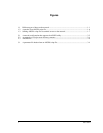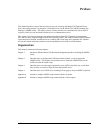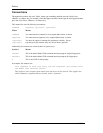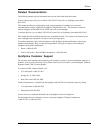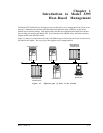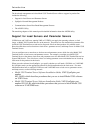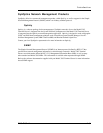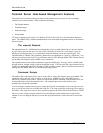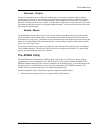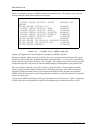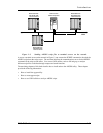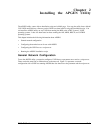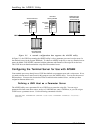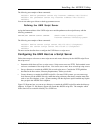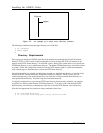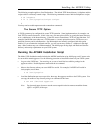
Introduction
893-769-A 1 -5
Dial-back Scripts
If a port on a terminal server is a “dial-back” modem port, you can create a dial-back script to enhance
security on the modem port. The dial-back script specifies the telephone number to dial when a specific
user attempts to log on to the server through a modem. If the terminal server cannot find a script file for
that user, it will not permit the user to log in. If it does find a script file for the user, the server will cause
the modem to dial back that user at a designated telephone number. You can use the dial-back script with a
login script for dial-back ports.
Nested Menus
The Nested Menus feature allows you to create a series of menus with options that can execute terminal
server commands or open another menu. You create the nested menus in a menu file which resides on a
host defined as a script server. The terminal server obtains the menu file from the script server and uses the
menus to override the Model 3395 command interface. You can enable or require nested menus at specific
ports or in a user's login script.
If you require nested menus at a port, you can prevent users at that port from gaining access to the Model
3395 command interface. The users will only have access to the options on the menu. To change these
options, you can modify the menu file on the host.
The APGEN Utility
The ASCII Parameter File Generator (APGEN) utility, which runs on a UNIX host, converts a binary
communications server parameter file to an ASCII script file. The script file contains the Model 3395
DEFINE commands that specify the values for parameters on the terminal server. You download the script
file from the host to a terminal server on the network with the Model 3395 SCRIPT command. The
APGEN utility can convert compressed or uncompressed parameter files.
The following Model 3395 Terminal Server products support the APGEN Utility:
• Terminal servers, running version 5.1 or greater of Model 3395 software



